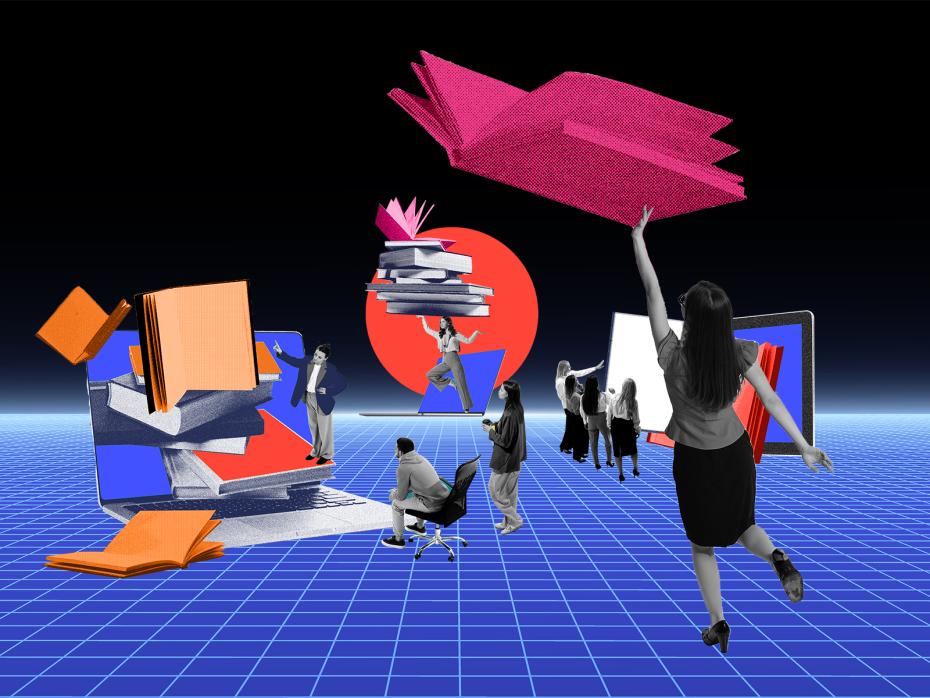With the digital environment changing rapidly, information literacy is essential in both academic and professional contexts. Integrating information literacy into the core curriculum, assessing skills and providing a certification recognised by employers are all crucial ways librarians support students.
Here is how our institution’s libraries are implementing information literacy programmes for health students.
Setting the ground rules
Like many other universities, we have set out targeted skills in a Framework for Information Literacy, which encourages clear and in-depth dialogue between teachers and librarians about the goals of information literacy training. It also helps ensure the quality of the training provided by librarians.
The competency grid is divided into five units, progressing from basic to advanced skills. The first three units are aimed at undergraduate students to help them learn how to define their information needs and identify sources, how to search for information and how to assess the relevance and reliability of results.
- How ‘memory institutions’ can preserve our digital future
- Redesigning the university library for creating and collaborating
- Campus talks: university libraries – and librarians – that are leading the change
Inspired by national and international documents, such as the French ADBU platform RECIF, our Framework for Information Literacy pays particular attention to the culture and practical skills of each academic field. The content and format of information literacy training are defined together with teachers, addressing the specific needs of their students and the learning objectives of their courses.
Training everyone according to their needs
The training method depends on the number of trainees. E-learning and a combination of self-learning and directed sessions in libraries or online can be used to reach larger groups of students. The hybrid mode allows all undergraduates in health sciences – about 5,500 students – to receive information literacy training.
The Framework for Information Literacy is implemented through modular “training bricks” – each corresponding to one or more information literacy skills designed for medical or health sciences students. Bricks can be selected and combined according to the specific objectives of each course. They are based on the main research tools, databases, glossary and standards in the field.
Students work on practical cases through guided exercises. They complete the online courses independently on their faculty’s e-learning platform but they can attend a session with a librarian to ask questions. They can also use the “meet a librarian” service either on campus or online for further personalised help. Students take a test at the end of the course and their grade counts toward their degree.
Relating information literacy to the field of study
Putting information literacy into context, using well-known competency grids in the academic and professional field, enhances the impact of the training. That is why university libraries are now working with a specific digital literacy framework: PIX+ Professionnels de santé.
PIX is a platform used in secondary and higher education to help students develop and assess their digital skills. A specialised version of PIX for health students and professionals, PIX+ Professionnels de santé, has recently been released, which includes several components on information research in this field. Librarians are transposing their “training bricks” on information literacy for health students into the PIX framework to create new content. From here, we can explore gamification of training.
We organise courses around common core content, which is personalised according to each student’s curriculum – medical and health studies, physiotherapy, occupational therapy, etc. These new courses only partly replace existing information literacy courses. Indeed, some necessary academic skills are not included in PIX, such as producing a standard bibliography.
The modularity remains essential to the process. Every student takes an initial test to assess his or her level of knowledge. Depending on the results, the student has access to a course that meets his or her own needs: beginner, intermediate or advanced. We assess skills again with a final test at the end of the course, granting the appropriate certification level. Throughout their education, students will be able to progress towards advanced certification. This progressive approach can be used with university students but it also meets the requirements of lifelong learning.
The first courses will be available from the start of the new academic year and the range of content will be gradually expanded. This new step in the development of information literacy in relation to national standards brings several benefits: information literacy is incorporated into a global approach towards digital and practical skills, the certification is widely recognised in the professional environment and validated skills are directly related to professional practice.
The continuum between academic and professional worlds is key to our university’s ERASME project (Education and Research to Advance Societal Missions through Engagement). As such, the implementation of PIX could be the first step towards boosting information literacy training in UPEC libraries.
Marine Rigeade is director of libraries at Université Paris-Est Créteil.
If you would like advice and insight from academics and university staff delivered direct to your inbox each week, sign up for the Campus newsletter.




comment